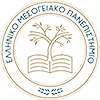Module Title: Realisitic Multimedia and Animation
Teaching hours: 39
Credits: 7,5
Semester: 2nd
Instructor: Dr. Pachoulakis Ioannis Associate Professor, Dr. Athanasios Malamos
Course Objectives
The course focuses on developing a fundamental understanding of physically realistic modeling and animation as a foundation stone for game architecture and implementation.
Kinematics and dynamics approaches are initially applied to systems of increasing complexity, followed by the application of numerical methods to compute their physically-realistic evolution into physically accurate future system states.
The course also examines how demands for fast user interaction, short-lived contexts and busy graphical scenes in today’s video games may actually lead to preferring a physically plausible evolution instead of physically accurate one.
Therefore, in the context of this course, students will have the opportunity to develop realistic multimedia applications, including games using popular game engines.
The course naturally presumes an avid interest in physics, mathematics and coding.
Course Outline
- Recap: Basic Game Ingredients: Physics, Math, Numerical Methods, Design and Implementation. Points and Lines, Coordinate Systems, Distances between points and shapes, Applications to Collision Detection, Trigonometry.
- Vector and Matrix Operations: Scalar and Vector physical quantities; Common Geometrical Transformations (Translation, Scaling, Rotation) and their combinations.
- Rigid Body Motion: Speed, Velocity, Acceleration, Newton’s Laws, Forces (gravitation, spring, friction, torque, Momenta (Linear & Angular), Center of Mass, Inertia Tensor, Work, Kinetic & Potential Energies, Conservation Laws.
- Rotational Motion and Rotational Dynamics.
- Rigid Body Motion: Newtonian & Lagrangian Dynamics – Equations of Motion for a Particle and for Particle Systems, the effect of Conservative and Dissipative Forces.
- Detecting and Handling Collisions.
- Relevant topics in Linear Algebra and Calculus.
- Selected Numerical Methods: Euler & Taylor methods, Runge-Kutta Methods, Extrapolation Methods, Numerical Stability.
- Topics in Game Engines: Workflow, Models, Environment, Shaders, Textures, Effects, Lighting Models, Transparency, Scripting, etc.
Bibliography:
- “Beginning Math and Physics for Game Programmers – 3rd ed”, W. Stahler, New Riders, 2004, ISBN 978-0735713901
- “Physics for Game Developers – 2nd ed”, D. M. Bourg, O’Reilly, 2013, ISBN 978-1-449-39251-2
- “Physics for Game Programmers”, G. Palmer, A.Press, 2005, ISBN 1-59059-472-X
- “Mathematics for Game Developers”, C. Tremblay, Thomson, 2004, ISBN 1-59200-038-X
- “Game Physics, Second Edition”, D. H. Eberly, Morgan Kaufmann, 2010, ISBN 978-0123749031
- Selected Articles & other readings from the current bibliography
